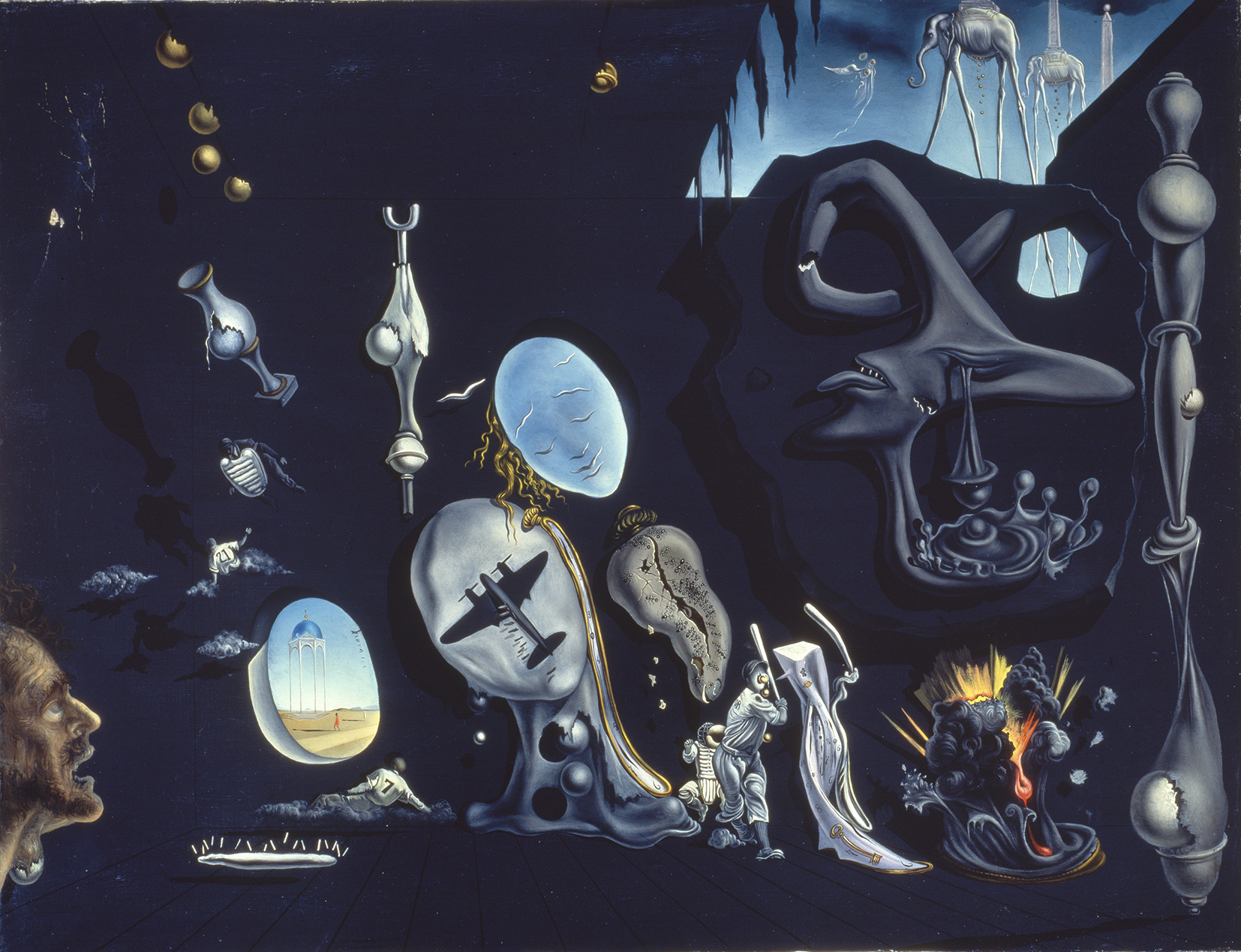The early literary surrealists of the mid-1920s were skeptical of any visual possibility. Their aim — to fuse art with life, reality and dreams — was to be realized through the immediacy of writing. Painting, by contrast, was a laborious, indirect expression mediated by style and technique. Andre Breton, the leader, central theorist and "pope" of surrealism, held out for a visual effectuation. It arrived with Salvador Dali (1904-89), whose entire career — from painter and sculptor to filmmaker, book illustrator, perfumer, jeweler and media celebrity — is currently being explored at the Kyoto Municipal Museum of Art.
Dali began painting between 1910-14, though it was in Madrid from 1922 that he attended the San Fernando Academy of Fine Arts and met fellow dorm residents, such as Luis Bunuel. It was with Bunuel that he made the infamous surrealist short "Un Chien Andalou" (1929), in which a pig's eyeball is slashed with a knife as a cloud drifts across the midnight moon's face. Their later filmic-comedy "L'Age d'Or" (1930), known for its lax mores, so outraged its audience that art works in the cinema foyer were smashed.
While Dali's educational institute was considered progressive, he thought the instruction antiquated. Provisionally expelled in 1923 for leading a student protest against the failure of painter Daniel Vazquez Diaz to be appointed a teaching chair, Dali then an impressionist/fauvist was dismissed permanently in 1926 for claiming his examiners were unqualified to judge him on his knowledge of the theory of fine art. Thereafter, he was little other than a provincial follower of the succession of Parisian trends from cubism through purism and new objectivity, to which he contributed little of distinction.


















With your current subscription plan you can comment on stories. However, before writing your first comment, please create a display name in the Profile section of your subscriber account page.